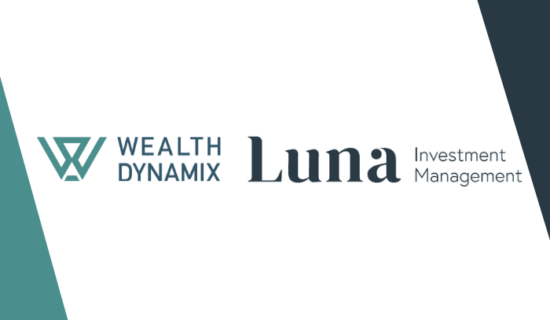Wealth managers must master hyper-personalisation to retain revenues during the great wealth transfer.
For wealth managers striving to achieve competitive advantage, the depth of client relationships heavily influences service quality, loyalty, share of wallet and, ultimately, profitability.
Increasingly, wealth managers are reassessing what they must do to continue delivering value for clients and strengthen client relationships. With pressure mounting to grow and retain AUM amid the long-awaited ‘great wealth transfer’ (the transfer of more than $30 trillion in wealth from baby boomers to younger generations over the next two decades), attention is now focused on understanding how millennial and Gen-X individuals prefer to manage their financial affairs, and the fiscal management skills they are likely to have.
As few as 13% of those set to inherit wealth are expected to retain their relatives’ advisors (Capco) and just over half (53%) of millennials have changed primary wealth management firms in the recent years (Capgemini). So, what’s the reason behind it? Fee-sensitive next generation clients favour high-tech, high-touch personalised services. Personalisation substantially increases engagement and loyalty.
Millennials are defecting in pursuit of digitised experiences, more control, and more transparency: with 34% of investors saying they are likely to transfer 20% or more of their assets to get a better digital experience (Deloitte). In the word wealth report by Capgemini, 46% of millennials answered they are willing to change primary wealth management firms due to high fees, 39% said due to lack of transparency, and 33% stating due to slow service.
Historically, traditional wealth managers have differentiated their offerings and justified higher fees by stressing the value of personalised service and face-to-face interactions – which come at a price. But operating models must adapt for them to remain competitive, given shifting client requirements and downward pressure on fees.
In recent years online-only wealth management service providers seem to have mastered personalisation, digitally and at palatable cost, with little or no human intervention. Their platforms have attracted younger mass affluent generations, whose AUM is not currently in the sweet spot for traditional wealth managers. However, this will change over time, as wealth is transferred from one generation to the next.
Personalised service vs. fees – must NextGen clients be forced to choose?
Increasingly, NextGen clients are looking for the best of both worlds. Despite the fact that this generation is one of the most debt-averse generations yet, they also scored the lowest in a recent financial literacy study by the TIAA Institute and the Global Financial Literacy Excellence Center. Although Gen Z respondents averaged the lowest (43%) in answering finance-related questions correctly, no generation demonstrated a particularly high level of financial acumen. On the same survey, just 48% of Millennials, 49% of Gen X, and 55% of both Baby Boomers and Silent Generation answered the questions correctly—hardly impressive numbers. So, the need for professional advice is on the rise, and if wealth managers can strike the right balance between personalised service and cost, their competitive advantage will soar.
“The need for professional advice is on the rise, and if wealth managers can strike the right balance between personalised service and cost, their competitive advantage will soar.”
In the coming years, wealth managers must change their approach to personalisation in response to shifting client expectations, increased competition from online service providers and pressure to sustain service quality, while needing to support remote working and reduce cost-to-income ratios.
Hyper-personalisation is no more an option but a necessity
Hyper-personalisation is the use of data to provide more personalised and targeted products, services and content. The volume of client data captured throughout the client lifecycle has never been greater. Although this rich source of intelligence could be used for hyper-personalisation, the majority of advisors still lack the tools required to analyse and interpret masses of data quickly and cost-effectively, to deliver next best recommendations and advice.
In the coming years, wealth managers will turn to technology to leverage data and take the manual legwork out of interpreting clients’ needs, preferences, sentiment and intentions. This is the only way they can deliver highly personalised client service, cost-effectively and at scale. Instead of being restricted to segmentation based only on age, gender and AUM, automated hyper-personalisation equips advisors with the intelligence to create bespoke risk profiles, generate more timely and meaningful client reports and produce personalised portfolios, incorporating customised advice.
With a deeper level of understanding, wealth managers can then be equipped to offer advice that extends beyond solely the financial, tapping into more detailed aspects of clients’ lives – such as their current health and career status, as well as their larger personal and professional interests. Getting to know an investor in a broader context gives advisors the opportunity to move beyond the brief, impersonal conversations that typify customer exchanges, and instead engage in earnest discussions that help build trust and, ultimately, long-term client relationships. But for advisors to be able to operate on this deeper level, their wealth-management firms must make company-wide commitments to hyper-personalisation.
Naturally, the more personalised client service is, the deeper client relationships become. And the deeper client relationships become, the more wealth managers will be able to compete in a world that is now characterised by changing client demographics and uncertain outlook.
With Wealth Dynamix, we can alleviate this process by providing a seamless, fully digital case management workflow and data insights for more effective client engagement and opportunities to grow AUM. Download our e-book “10 reasons to choose Wealth Dynamix” to find out how you can elevate client experiences with accelerated and quality client service responses.





